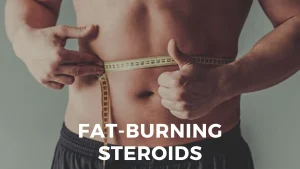Are SARMs Safer Than Steroids?
Selective Androgen Receptor Modulators (SARMs) are widely valued within the bodybuilding community owing to the high marketing promises.

Table of Contents
Selective Androgen Receptor Modulators (SARMs) are widely valued within the bodybuilding community owing to the high marketing promises. The producers of SARMs claim that these work like steroids but have fewer adverse effects.
Is this accurate? Using current medical science and anecdotal evidence, comparing SARMs to steroids can be elaborately discussed.
SARMs, if safe, will assist in enhancing lean muscle mass, red blood cell count, and bone mineral content in patients suffering from cachexia, anemia, and osteoporosis.
SARMs were developed to accomplish the same aims as anabolic steroids but without cardiovascular, androgenic, hepatic, estrogenic, or any adverse effects.
What Are SARMs?

SARMs, like steroids, work by attaching to the androgen receptor to increase muscle mass, strength, and fat loss. These are non-steroidal and hence not exogenous testosterone. Bodybuilders argue that using SARMs and being ‘natural’ is possible.
These compounds have a unique structural feature called tissue selectivity. Tissue selectivity works by stimulating anabolism in desired cells while blocking adverse effects in others.
SARMs are now being deeply researched as a therapy for cachexia, osteoporosis, cancer, sexual dysfunction, Alzheimer’s, and multiple sclerosis, among others.
It has been shown that some anabolic-androgenic steroids (AAS) such as testosterone, Anavar, and Deca Durabolin effectively treat the health as mentioned earlier issues while remaining safe. These three compounds are now Food and Drug Administration (FDA)-approved and prescribed to millions of individuals worldwide.
However, anabolic steroids might cause cholesterol fluctuations, benign prostate enlargement, erythrocytosis (red blood cell excess), gynecomastia, low testosterone, virilization, and leg edema in people using them.
The goal of SARMs is to reduce the androgenic, estrogenic, and cardiovascular adverse effects of anabolic steroids via tissue selectivity. SARMs’ tissue selectivity transcriptional activation is not well understood. Read also about rad mass 4 dhea reviews. So, like anabolic steroids, SARMs may potentially have unpleasant side effects. These are only to be used as ‘research compounds’ until further human studies are done.
SARMs are a popular choice among bodybuilders since they are considered a ‘safe alternative to steroids’. However, based on current research and essential anecdotal data from professionals, this idea is still unconfirmed.
Are They Safe?
Steroidal SARMs, or testosterone-derived, were first synthesized in the 1940s. Non-steroidal SARMs appeared in the late 1990s (which is what bodybuilders refer to today). The effects of these chemicals remain uncertain due to their recent discovery.
These substances are not authorized for human use by the FDA due to their unknown safety profile. It cautioned people not to use them in 2017 because they were ‘potentially harmful’.
On short-term usage, SARMs may cause liver and cardiovascular concerns, according to the FDA. The long-term implications of it are still uncertain, they said. According to a small study, only 52% of SARM items offered online contained the compounds mentioned on the labels. Safety concerns are raised by the fact that 39% of these products include other unapproved chemicals.
Basing his hypothesis on 2,000 patients’ test results, Dr. Thomas O’Connor, a testosterone and anabolic steroids expert, claims SARMs are more harmful than steroids to those who have taken them.
Are They Legal?
SARMs are now permitted for sale as ‘research compounds’. The liquid version is ideal for rodents and is widely available.
Manufacturers have started offering SARMs in pill form (a favorable administration method for humans), given their possible anabolic effects.
The FDA has not approved SARMs for human use; thus, producers may market them as ‘dietary supplements’. Companies can’t even describe their advantages unless they’ve been medically proven.
SARMs’ legality is a little murky. Buying SARMs to deliver liquid drops to your rat and monitor the results is entirely legal.
Because SARMs are new and their long-term effects are unknown, they are theoretically forbidden to buy or sell for human use.
On the other hand, AAS has regulated drugs and is thus prohibited in the US and many other nations. The sole exception is when a doctor prescribes steroids to address a medical problem, such as hypogonadism.
Benefits of SARMs

Muscular Power and Size
SARMs have been shown to increase muscle mass and strength. However, early human experiments reveal that they may not generate as much muscle as anabolic steroids.
In research presented by the Inside Bodybuilding Health Clinic, SARM users acquired 1kg-1.5kg of fat-free mass in 4-6 weeks. At the same time, those on testosterone enanthate gained 5-7kg fat-free mass (300 and 600mg/week).
Weight Loss
Androgen receptor stimulation enhances lipolysis (fat loss), allowing users to burn significant quantities of subcutaneous fat. SARMs will therefore not only improve lean muscle mass but also improve the tone and definition.
Accepted in Society
SARMs have less social stigma than anabolic steroids, which were widely given to bodybuilders in the 1960s before their adverse effects became apparent.
SARMs have surpassed steroids in popularity because they are less stigmatized.
No Injections Needed
SARMs are typically taken orally as a liquid, minimizing the danger of infected needles or incorrect injection techniques causing paralysis.
Women-Friendly
Small-to-moderate doses of SARMs do not produce virilization in women owing to poor androgenicity. Unlike many anabolic steroids, they are safer for women.
SARMs are still being investigated; therefore, women may be better off opting for the few well-studied female-friendly steroids that have been shown to prevent masculinization.
A Better Osteoporosis Treatment
Anabolic steroids boost bone mineral density (BMD). BMD deficiency raises the risk of fractures and disability.
SARMs increase both bone mineral density and bone mechanical strength, possibly improving osteoporosis therapy.
Adverse Effects
Gynecomastia
Certain anabolic steroids may induce gynecomastia (gyno), which enlarges breast tissue in males.
It might seem like swollen nipples in the early stages, while later stages can mimic female breasts.
Several steroids have this effect by converting testosterone to estrogen. Anadrol, for example, may directly trigger estrogen receptors on a cellular basis (which does not have the aromatize enzyme present).
SARMs do not aromatize, although they may indirectly raise estrogen levels, causing gynecomastia. It competes with natural testosterone for binding to the androgen receptor. It can easily win this struggle due to its superior binding affinity, leaving natural testosterone levels accessible to bind to estrogen and DHT receptors.
The use of Arimistane (Androsta-3,5-diene-7,17-dione) throughout SARM cycles may help reduce excessive estrogen adverse effects.
On the other hand, most bodybuilders use stronger AIs or SERMs during steroid cycles to prevent estrogenic effects.
‘Dry steroids’ do not enhance estrogen levels, generating a body that does not cause gynecomastia. Some of these examples include Anavar, Superdrol, Turinabol, and Winstrol.
Hair Loss
SARMs block aromatase and 5-alpha reductase enzyme activity, preventing estrogen and DHT conversion.
In principle, bodybuilders using SARMs would grow lean muscle mass without the danger of hair loss. In reality, SARM users report male pattern baldness.
Because of SARMs’ ability to compete with natural testosterone and indirectly raise estrogen and DHT levels, hair loss will be more likely to occur.
SARMs have a far greater binding affinity than natural testosterone, leaving free testosterone more accessible for conversion to estrogen and DHT.
Low Testosterone
SARMs reduce FSH and LH by over-binding the AR receptor, lowering natural testosterone levels. Depending on the SARM, users may need to administer a post-cycle therapy.
From most suppressive to least suppressive, here are the most prevalent SARMs:
Ligandrol (LGD-4033)
Ligandrol is a powerful SARM often used by weightlifters to bulk up. Due to its anabolic effects and tissue selectivity, Ligandrol and other selective androgen receptor modulators may be used to treat cachexia. It binds significantly to the androgen receptor but is a modest agonist in the prostate.
Thus, LGD 4033 prevents the androgenic effects of testosterone and other anabolic steroids, avoiding prostate hypertrophy.
Ligand Pharmaceuticals (thus the term ‘Ligandrol’) is an American biotechnology firm that manufactured LGD 4033 in 2007. It is presently classified ‘research chemical’ and has not been approved by the FDA because of its new composition.
Although LGD 4033’s adverse effects are unknown, the World Anti-Doping Agency (WADA) judged that its benefits to athletic performance are evident, thereby banning Ligandrol and other SARMs from professional sports.
Testolone (RAD 140)
Testolone is a non-steroidal SARM that binds to the androgen receptor. RAD 140 and other SARMs were developed to treat osteoporosis, cachexia, and anemia.
Anabolic drugs enhance lean mass but have unfavorable cardiovascular, hepatic, estrogenic, and androgenic consequences.
So, using tissue selectivity, RAD 140 mimics steroids’ muscle-building and strength-enhancing properties with minimal side effects.
Radius Health, a US biotechnology firm, created RAD 140 in 2010. Because this is so new, nothing is known about its long-term impacts on people.
In animal studies, RAD 140 outperformed testosterone propionate as an anabolic agent (mg per mg).
In clinical trials, this increased lean body mass by 10% in monkeys after only 28 days, proving its potency.
Andarine (S4)
Andarine is a SARMs and an experimental medicine that the FDA has not authorized. Some supplement companies include this in bodybuilding products, but the institution deems S4 supplements unlawful.
People use this substance to increase athletic performance and treat cachexia (or wasting syndrome), osteoporosis, and prostate health. However, there is no clear scientific evidence to back these claims. Andarine is somehow risky too.
Ostarine (MK-2866)
Ostarine, also known as Enobosarm or MK-2866, is a second-generation SARM.
A safer alternative to steroids, MK-2866 was designed to mirror their anabolic properties without the adverse side effects. Anemia, osteoporosis, and cachexia are treated using this substance. GTX Inc, a US biotechnology company, produced this in 2001 during phase I, II, and III clinical studies.
Oncologists failed to treat patients with MK-2866 in two phase III studies (suffering from cachexia). Despite increased muscle growth, there was no substantial gain in physical strength (size).
Cardarine (GW501516)
Cardarine is a Peroxisome Proliferator-Activated Receptor Delta (PPARD) receptor agonist that is often referred to as a ‘SARM’ owing to its anabolic and fat-burning properties. SARMs is a new chemical, created in 1992, whose effects are unknown and unapproved by the FDA.
It has been prohibited from sports because of early studies showing it improves body composition and athletic performance. WADA has added GW501516 to its banned drugs, classifying it as a ‘hormone and metabolic modulator.’
Due to its potent fat-burning properties, GW501516 has shown early promise in treating obesity in medical and weightlifting communities.
It is worth noting that the stronger the SARM, the more suppressive it is.
If you use SARMs, it is recommended to get blood testing done to check hypothalamic-pituitary-testicular (HPT) axis damage and if a post cycle therapy (PCT) is required.
Not all SARMs are created equal. Combining them may aggravate the hypogonadal impact.
Because these are taken orally, their half-lives are short, requiring just a few days between PCTs. Unlike steroids, which may take up to two weeks to leave the body.
Bodybuilders often use Nolvadex or Clomid as a PCT for SARMs, with Nolvadex being the more powerful SERM.
High Blood Pressure
SARMs reduced HDL cholesterol (the good form) in phase I and II studies, increasing the risk of hypertension.
Oral steroids are infamous for their detrimental effects on blood lipids, explaining the cardiovascular strain caused by SARMs. A lack of aromatization may contribute to elevated cholesterol since increased estrogen levels enhance HDL.
SARM users should add regular exercise to their cycles, along with fish oil supplements, to battle HDL loss and avoid heart injury.
Liver Toxicity
SARM study has shown mild to moderate increases in ALT/AST liver enzymes, suggesting hepatic strain. During cycles, consider taking TUDCA, which has been demonstrated to minimize inflammation and liver damage.
SARMs should not be used with hepatotoxic oral steroids like Dianabol, Anadrol, Winstrol, etc.
Dr. Thomas O’Connor observes SARMs are unsafe, citing one patient who had worsening liver enzymes and cholesterol levels after using Cardarine. He compared the side effects to taking 50 mg Anavar each day. It is recorded that this had no discernible impact on the patient’s body composition.
In a similar study of Connor, two guys developed hepatocellular–cholestasis after taking SARMs. A 24-year-old male took LGD-4033 for nine weeks and a 49-year-old male used RAD140 for four weeks, then sporadically.
Cancer-causing
A shorter investigation on people revealed no tumor growth with lower dosages of GW501516. It has anti-inflammatory effects on pancreatic cancer cells, according to study findings.
Thus, the long-term consequences of SARMs on cancer and people are unclear, while it is probable that SARMs, when misused, may cause cancer.
Administration

SARMs may be administered orally, sublingually, or intramuscularly.
Orally
To use SARMs, users must insert the appropriate amount in their mouth (measured using an eyedropper or syringe) and then swallow. With its strong odor and taste, some users pinch their noses while taking SARMs to get rid of the flavor.
However, this approach may alter biological availability and so is not suggested for best outcomes.
MK-677 has the most pungent taste of any SARMs and may linger for hours after use.
Sublingually
Sub lingua means ‘under the tongue’ in Latin. Sublingual administration is favored over oral owing to quicker bloodstream penetration. The liquid contacts the mucus membrane (behind the tongue), allowing simple venous circulation due to capillaries under the epithelium.
By minimizing pre-systemic metabolism, this route of delivery boosts biological availability and hence outcomes.
Place the liquid beneath your tongue (with an eyedropper or syringe) and wait 10-15 seconds before swallowing.
The downside of sublingual delivery is the unpleasant taste. It may not be a problem when one develops experience.
Intramuscularly
Unlike oral SARMs, injectable SARMs have better biological availability than oral SARMs because the liver does not break down the molecule. So, given the exact dosage, topical distribution may be preferable to oral delivery.
Oral SARMs also negatively influence HDL cholesterol due to the liver, significantly increasing hepatic lipase. Injectable SARMs may therefore preserve cholesterol levels while minimizing cardiovascular strain.
SARMs for Women

Many anabolic steroids are not suitable for women owing to virilization risks (masculine side effects).
Breast shrinkage, deeper voice, irregular menstrual periods, and body hair development are all side effects of steroid use in women.
Exceptions are Anavar, which females may take in moderation and avoid masculinizing effects.
According to early anecdotal data, SARMs are better tolerated by women than males due to tissue selectivity.
Women using SARMs still face significant liver and cardiac risks. The hazards of using modest, female-friendly steroids like Anavar seem to be much lower.
Counterfeit Products
Both anabolic steroids and SARMs are often counterfeited, posing health dangers to users. Some pharmaceutical-grade steroids may be purchased, and some are recommended medically (which then leak onto the black market). Because SARMs are not FDA approved, there is no pharmaceutical grade available. SARMs are not as easy to get by as pharmaceutical-grade steroids.
Verdict
Anabolic steroids have been studied for over a century, but SARMs have only been studied for two decades (with limited human trials).
Non-steroidal SARMs are showing considerable potential in the medical and bodybuilding arenas.
If practical, many more individuals would be free of cachexia and osteoporosis. Few bodybuilders would suffer unfavorable health effects, reducing damage and successfully discouraging anabolic steroid usage.
Studies and anecdotal evidence show SARMs are more hazardous than steroids, have less influence on body composition, and promote less muscular growth. The risk-to-reward ratio is better for steroids than SARMs, especially when using ‘safe steroids’ like testosterone, which doctors worldwide commonly give to males.




